Themed on the Irani cafe, London chain Dishoom will open its third outpost in King’s Cross. Apart from hailing this cultural and culinary icon, the space salutes the people and the mood that shaped 19th and 20th century Bombay and India
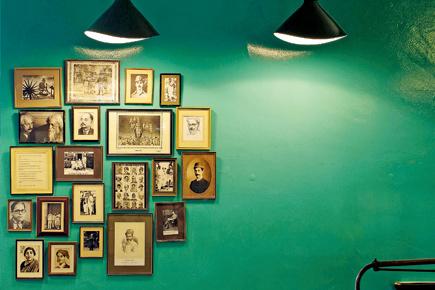
Mumbai Guide, interview, Dishoom, London restaurant chain, Mumbai Irani Cafe theme, King's Cross, Covent Garden, Shamil Thakrar, Parsi culture, Irani culture, bun maska
Q. When Dishoom began in 2010, did you imagine that you would be looking at a third outlet by November 2014?
A. We first opened in Covent Garden. This is our third permanent site in over four years. We’re not focussed on rapid expansion. We want to make sure each restaurant we open, feels a bit different to the other Dishooms — we invariably like to look at things afresh. We love digging into a completely different aspect or period of Bombay (now Mumbai), and bringing that alive.
ADVERTISEMENT
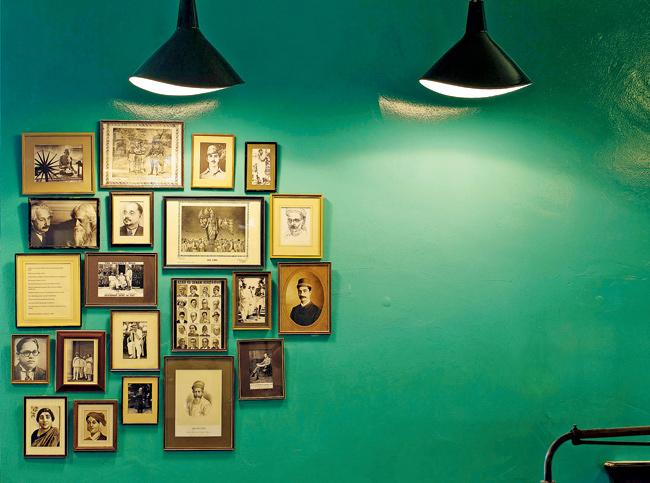
This wall at Dishoom’s King’s Cross outlet includes photo frames of some of India’s biggest national leaders, from Bhagat Singh to Tagore, Gandhi and Nehru.
Q. Tell us about your (Shamil and Kavi Thakrar’s) approach to this new project.
A. My cousin Kavi and I have been completely involved in this project from the start. We are completely committed, and give all of ourselves and more to Dishoom — making endless trips to Bombay, researching to the most painful degree of detail, doing the historical research and worrying over things that nobody will ever even notice. As a team, we all work really hard to create the vision we share, but Kavi and I are at the helm, holding it all together. We are also highly committed to making sure the whole team has a great experience pulling together the project. We have an enormous focus at Dishoom on making sure our people enjoy what they do.
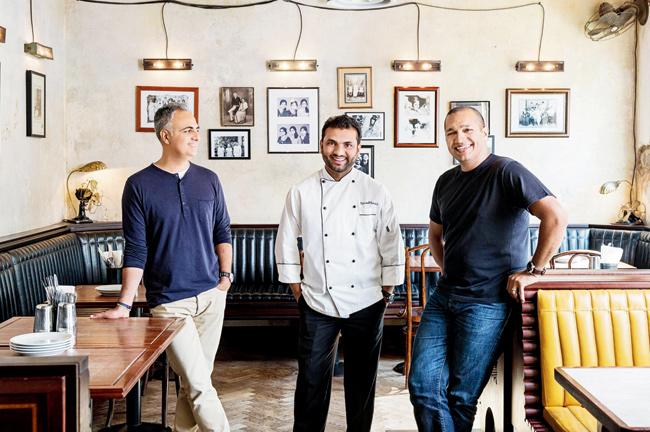
Co-founders and cousins, (Left) Shamil and (right) Kavi Thakrar with executive chef Navid Nasir at their Shoreditch outpost. PICS COURTESY/MING TANG-EVANS
Q. Have you ensured that the Irani cafe vibe is intact as much as it appears refreshing to the eye?
A.We spent a lot of time in the remaining Irani cafés as well as — for this particular Dishoom — investigating the historical buildings, architecture and institutions that would have set the tone of the 1920s Bombay. The Western Railway offices, Willingdon Club, Ripon Club, the VT (Victoria Terminus) and Bombay Central railway stations. We’ve drawn from all of these to create the new Dishoom, which imagines itself to be an Irani café that evolved within an industrial railway transit shed behind Victoria Terminus (which is closely related to the King’s Cross buildings). The design approach is different from our previous restaurants because of this. Our building is an interesting Victorian industrial building in King’s Cross — a historically important fragment of London. We enjoy bringing different aspects of Bombay and India’s culture alive for Londoners. In this Dishoom, there are many references to the Independence movement and the people and events of the early 20th century in Bombay and India. These aspects of our past are so important.
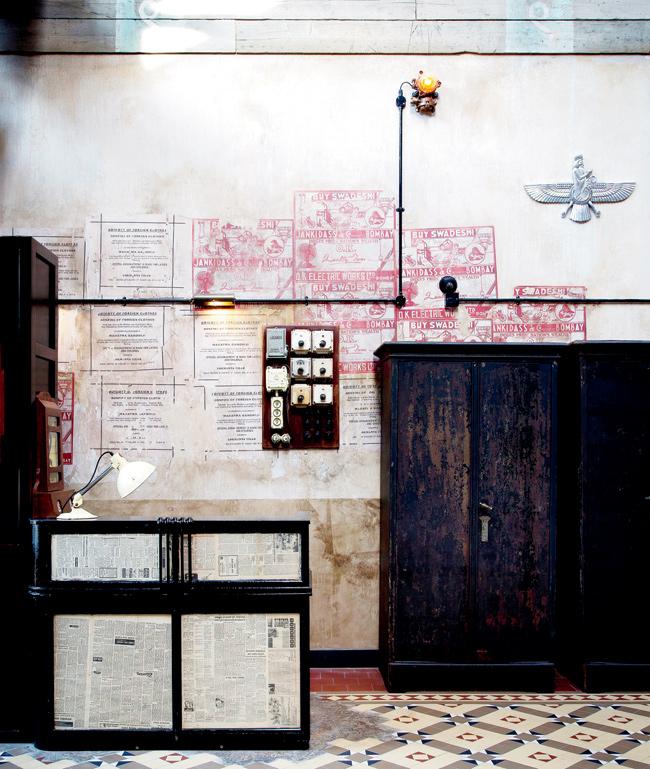
The entrance to Dishoom King’s Cross. It occupies a section of the heritage building known as The Stables, as it was used to house the draft horses that pulled the canal boats. There’s a host desk, close to a pair of early 20th century Godrej cabinets with a cast metal Asho Farohar (a Zoroastrian symbol) hung above them. The hand-painted rules nearby reference elements to India’s freedom struggle.
Q. Did the same interior designers — who worked on your earlier ventures — come on board for this branch as well?
A.We worked with a new design team, Macaulay Sinclair, because we wanted a fresh approach. These guys shared our vision as well as our passion (obsessive nerdiness!) for the minutiae of design. They genuinely care about whether a certain type of hinge, wall socket or light switch is right or wrong — so it’s a great fit.
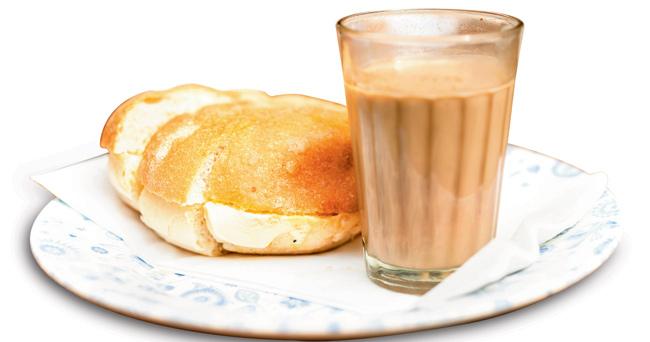
Bun Maska
Q. Will we see any menu changes?
A. We have one King’s Cross special dish — Nalli Nihari — with or without Bheja! Nihari felt right because it’s such an honest and hearty dish — traditionally consumed by workers at breakfast to get them through a long day’s labour.
We’re also serving a really interesting new cocktail list. Bombay’s very own Sir Jamsetjee Jejeebhoy brought ice to Bombay from Boston in 1834, and we’ve enjoyed using some of these stories of 19th century Sethias for inspiration. Our Daru-walla (Bar Manager), Carl has already won Young British Foodie of the Year for these drinks that we age in casks and bottles. Our bar (naturally called The Permit Room!) is a lovely brick underground space originally housed horses, which were used to power the boats on the canals.
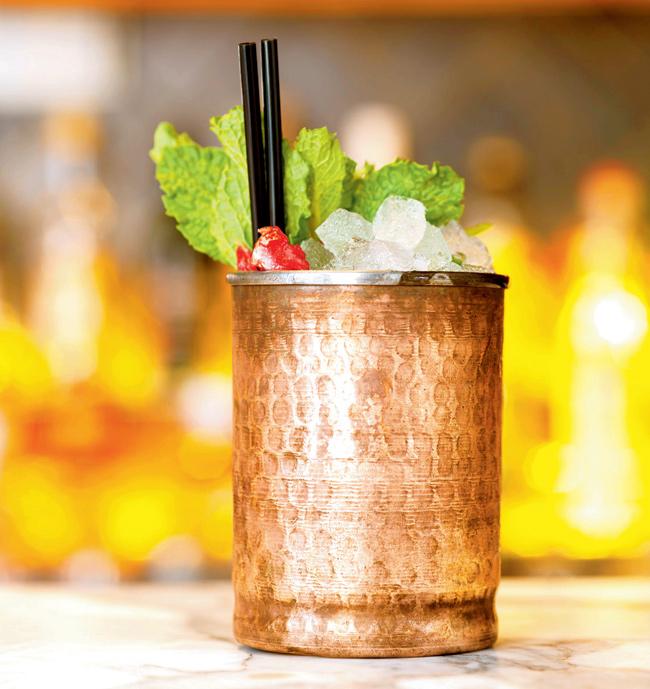
Edwina’s Affair
Q. How did you choose King’s Cross for the third outpost?
A. King’s Cross is perfect for us — we feel privileged to be opening in this kind of space. It’s an important, historical part of London. We also love what’s going on in the area — the thoughtful restoration of iconic old buildings, the sense of history, the shared spaces, the focus on arts and culture, and the social initiatives. It’s very much in tune with the way we feel about London. In recent years, London’s prosperity has increased and this wealth has bought with it a lot of exclusive spaces. However, for a city to thrive, we need shared democratic spaces such as King’s Cross where all kinds of people can mingle, stroll, see free art and play in the fountains. We’re hoping that Dishoom becomes a natural addition.

The basement is dedicated to the Permit Room — Dishoom’s idea of an eccentric early 20th century bar in Bombay. Daru-walla (a.k.a. the Bar Manager) Carl Brown has created a selection of cocktails, which are first aged in bottles or barrels, then served over hand-chipped ice as a chota peg or a burra peg (traditional Indian liquor measures).
 Subscribe today by clicking the link and stay updated with the latest news!" Click here!
Subscribe today by clicking the link and stay updated with the latest news!" Click here!






